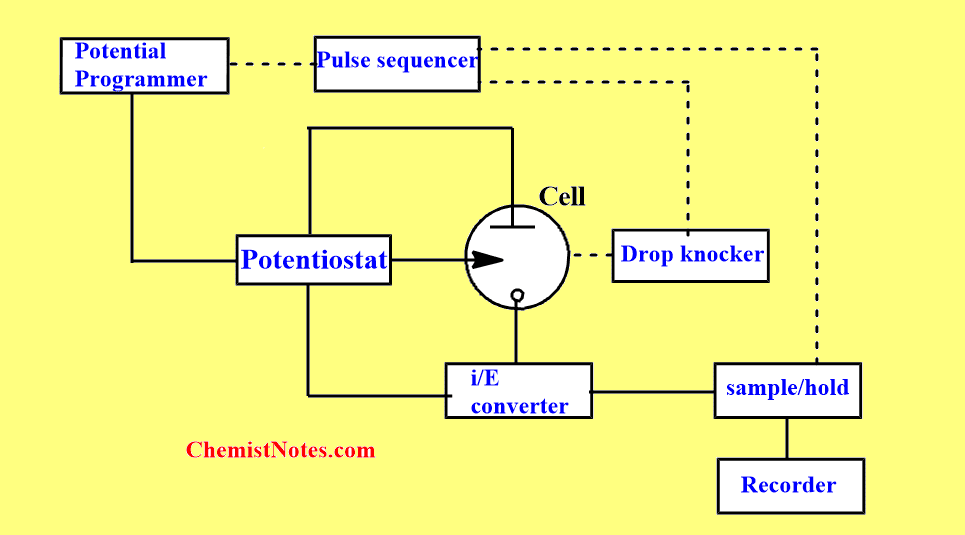Table of Contents
ToggleNormal pulse polarography is one type of pulse polarography, along with differential pulse polarography. These techniques were developed to increase the sensitivity of DC-polarography by minimizing the background capacitive contribution to the current. In this blog, the basic principle, excitation signal, voltammogram, instrumentation, and advantages of NPP have been discussed.
Normal pulse polarography principle
In normal pulse voltammetry, a series of potential pulses of increasing amplitude is applied to successive drops at a preselected time near the end of the drop lifetime.
Initially, the working electrode is kept(held) at a constant potential, also known as base potential, at which no reaction of the analyte occurs. After a fixed waiting period from the birth of a drop, the potential is changed abruptly to the value E for a period of about 50 ms in duration. It means the potential is increased to a certain value for a very short duration to the working electrode.
The current is measured about 40 ms after the pulse is applied at which time the contribution of the charging current is nearly zero. That is, the current is measured at a time near the end of the pulse. The potential pulse is ended by the return to the base value. The drop is dislodged just after the pulse ends. This represents one complete cycle.
Then the whole cycle is again repeated with successive drops but the amplitude of the potential pulse increases linearly with each drop. Simply, the pulse with increased amplitude is applied to each additional cycle as shown below.

In addition, because of the short pulse duration, the diffusion layer is thinner and hence there is a larger flux of analyte and the faradaic current is increased. The limiting current (i) is given by the following equation.

When limiting current is plotted against the applied potential, a sigmoidal shape voltammogram is obtained as shown.

Instrumentation of Normal Pulse Polarography
The block diagram of the instrumentation of NPP is shown below.

Advantages of Normal pulse polarography
There are many advantages of normal pulse polarography such as it has higher sensitivity than non-pulse DC polarography. Moreover, the analysis time is shorter and the detection limit is greater than 10-5 M. Therefore, the pulse polarographic technique( such as NPP, DPP) has overcome the limitation of DC polarography.
The major factors that make normal pulse polarography special in both quantitative analyses and to study the kinetics, thermodynamics aspects, and mechanism of the chemical reactions are given below.
- The first one is the timing of the pulse, the pulse is applied at the end of the drop’s lifetime, and hence charging current is nearly zero.
- The second is the pulse duration, the pulse is applied for a very short period of time nearly 50 ms. Therefore, the diffusion layer is thinner and the faradaic current is increased.






